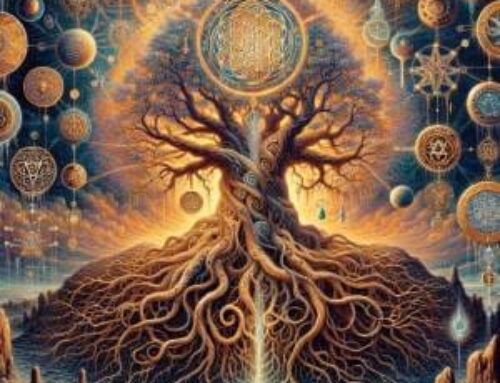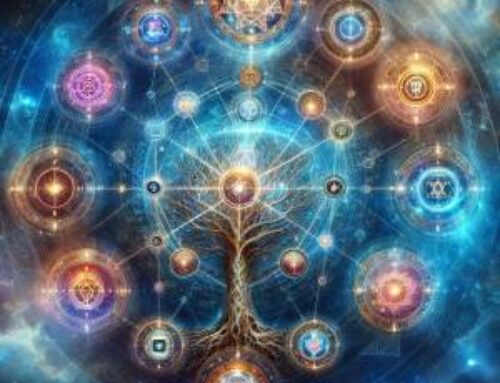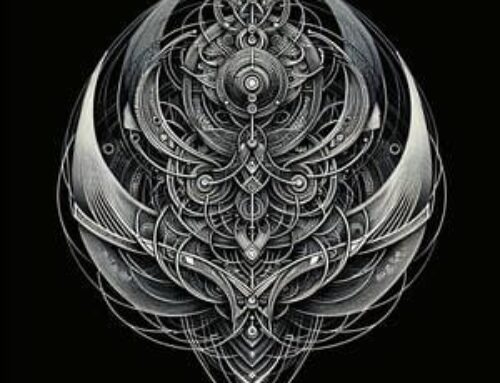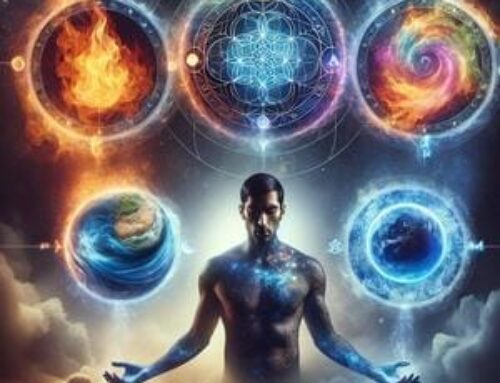Contents
- 1 Origins and Role of Yaldabaoth Gnostic
- 2 Symbolism and Interpretations
- 3 The Path to Gnosis
- 4 Conclusion
- 5 FAQ- yaldabaoth gnostic
- 5.1 1. Who is Yaldabaoth Gnostic tradition?
- 5.2 2. What is the significance of Yaldabaoth Gnostic´s lion-headed serpent depiction?
- 5.3 3. How do Gnostics view the material world?
- 5.4 4. What is the Rosicrucian connection to Gnosticism?
- 5.5 5. How can one achieve gnosis according to Gnostic and Rosicrucian teachings?
- 6 References:
In the fantastically intricate cosmos of Gnostic beliefs, Yaldabaoth stands as an enigma of considerable significance. Often referred to as the demiurge, his tale is laced with themes of creation, ignorance, and salvation – making him indispensable for anyone seeking to grasp Gnostic ideologies. This article is a deep dive into the origins, symbolism, and implications of Yaldabaoth Gnostic, threading through the lens of the profound Rosicrucian philosophy.
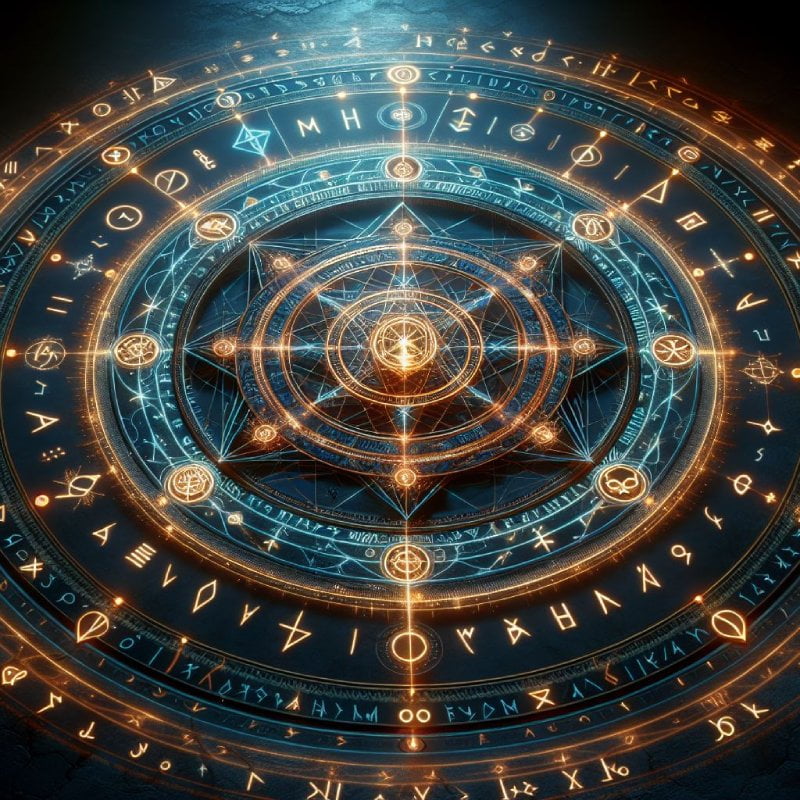
Origins and Role of Yaldabaoth Gnostic
The Unorthodox Creation of Yaldabaoth Gnostic
Imagine, if you will, a being sprung from a cosmic faux pas – Yaldabaoth. According to the Gnostics, this figure emerged from Sophia, a divine entity, but alas, without the blessing of the supreme source. This act of unlicensed creation paints Yaldabaoth as an entity of ignorance, bearing a false sense of divinity. Unlike other celestial beings birthed in alignment with divine order, Yaldabaoth embodies a lack of true knowledge, setting a foundation for his actions and the flawed world he would construct.
Yaldabaoth Gnostic’s Realm of Flaws
The world Yaldabaoth crafts is an epitome of imperfection and anguish. It is a stark contrast to the higher, spiritual realms – a place where humans find themselves ensnared. His creation is not just a physical realm but a domain of ignorance and entrapment, distant from divine fullness. Yaldabaoth’s ignorance and hubris drive him to proclaim himself the singular deity, perpetuating a cycle of deception and imprisonment.
It is incomprehensible how far man sinks into error when he abandons the simple truths of faith and sets his opinion against them (1).
Symbolism and Interpretations
The Lion-Headed Serpent
Picture Yaldabaoth, often depicted as a lion-headed serpent. This imagery, rich with Gnostic symbolism, portrays his dual essence: the lion’s head signifying pride and arrogance, while the serpent’s body denotes deceit and the cyclic nature of ignorance he maintains. Such representations highlight his roles both as creator and captor within the material world.
Cosmic Dualism and Human Suffering
Gnosticism paints a dualistic picture of the cosmos. On one side, there’s Yaldabaoth with his material world of darkness and ignorance; on the other, the luminous divine realm. This stark contrast forms the crux of the Gnostic narrative of salvation and enlightenment. Human suffering, in this view, is a direct result of Yaldabaoth’s flawed creation and ongoing deception.
The present disbelief against everything of which our sense-reason has no sense-objectivity is to blame for the fact that the most important truths for people are misunderstood (2).
The Path to Gnosis
Awakening the Divine Spark
At the heart of Gnostic belief lies the concept of a divine spark within each individual. This spark, a fragment of the higher divine realm, is trapped in Yaldabaoth’s material world. The journey of gnosis is about awakening this spark, recognizing one’s true essence, and transcending the material world’s illusions. Such awakening leads to spiritual liberation and a reunion with the divine.
Rosicrucian Reflections
Rosicrucian philosophy, while distinct, resonates with Gnostic themes, particularly in the pursuit of inner knowledge and spiritual enlightenment. Both traditions champion the uncovering of hidden truths and the attainment of higher wisdom. The Rosicrucians provide a complementary perspective on the Gnostic quest for gnosis, emphasizing the significance of inner enlightenment and spiritual development.
The true Rosicrucian does not turn lead into gold; he turns the world into words (3).
Practical Steps to Gnosis
The journey toward gnosis isn’t mere theory; it involves practical steps and inner work. Gnostic texts, alongside Rosicrucian teachings, stress the significance of meditation, initiations, rituals, self-reflection, and the relentless pursuit of knowledge. These practices assist individuals in connecting with their inner divine spark, gradually breaking free from the material world’s deceit. It’s a path of continuous learning and spiritual growth, aiming for the ultimate reunion with the divine.
This community of light has existed since the first day of the creation of the world, and its duration will be until the last day of time (4).
Conclusion
Yaldabaoth’s role in Gnostic cosmology is a profound commentary on creation, ignorance, and the path to spiritual enlightenment. Understanding his characteristics and the Gnostic view of the material world enables individuals to appreciate the journey toward gnosis and liberation. Rosicrucian teachings, with their focus on inner wisdom and spiritual development, offer valuable guidance in this quest for higher knowledge. For those intrigued by these concepts, the Hermetic Academy provides a treasure trove of resources for deeper exploration and understanding of these ancient and transformative philosophies.
The Role of Evil: Evil is considered a necessary aspect of creation, providing a counterbalance that allows for free will and growth (5).
FAQ- yaldabaoth gnostic
1. Who is Yaldabaoth Gnostic tradition?
A: Yaldabaoth is the demiurge in Gnostic cosmology, a flawed creator who embodies ignorance and false divinity. He creates the material world, which is seen as imperfect and filled with suffering.
2. What is the significance of Yaldabaoth Gnostic´s lion-headed serpent depiction?
A: This depiction symbolizes Yaldabaoth’s dual nature of power and deception, with the lion’s head representing arrogance and the serpent body symbolizing deceit and cyclical ignorance.
3. How do Gnostics view the material world?
A: Gnostics see the material world as a realm of ignorance and entrapment created by Yaldabaoth. They believe that true salvation involves escaping this world through the attainment of gnosis.
4. What is the Rosicrucian connection to Gnosticism?
A: While distinct, Rosicrucian philosophy shares parallels with Gnostic thought, particularly in the emphasis on inner knowledge and spiritual enlightenment. Both traditions value the pursuit of hidden truths and higher wisdom.
5. How can one achieve gnosis according to Gnostic and Rosicrucian teachings?
A: Achieving gnosis involves inner work, initiations, rituals, meditation, self-reflection, and the pursuit of knowledge. Both Gnostic and Rosicrucian teachings stress the importance of connecting with one’s inner divine spark and transcending material deceptions.
For those interested in further exploring these themes, the Hermetic Academy offers extensive resources and teachings on Gnosticism and Rosicrucian philosophy (6).
References:
(1) Eckartshausen, Karl von. (1802). Die Wolke über dem Heiligtum. München.
(2) Eckartshausen, Karl von. (1802). Die Wolke über dem Heiligtum. München.
(3) Ficino, M. (1471). Corpus Hermeticum. Florenz
(4) Eckartshausen, Karl von. (1802). Die Wolke über dem Heiligtum. München.
(5) Mathers, S. L. M. (1887). The Kabbalah Unveiled. London.
(6) Rubenstein, E. (2023). Magic: The Legacy of the Rosicrucians. Hermetic World, Paphos.

